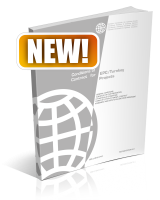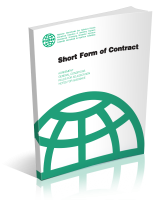CONTRACT MANAGEMENT
Preparation
Construction
Defects Liability Period


In order that all parties to a construction project (developer / employer, engineer / technical supervisor, contractor, subcontractors) may fully benefit from contract management, the activity should start early, at design stage, before tender (public procurement), because crucial factors, influencing the implementation of the entire project, such as the type of contract and the scope of work, are decided at this stage.
Apart from megaprojects, the usual practice in the construction industry was to leave financial affairs to be “managed” by the head office, or, even worse, they were not handled by anyone at all, instead of having a finance manager beside the project manager. Nowadays, it is beyond question that each project has its own finance manager, too, who is mainly “on site”, just like the project manager. The dual management system of financial and technical affairs has gained widespread acceptance in the entire construction management hierarchy.
Similarly, contract management is also becoming an integral part of the construction project management organization. In Western Europe it is common to have an on-site contract manager beside the project manager and the finance manager, and contract manager positions are to be found in higher levels of management, too. In Hungary, this trend has also been recognized by the largest companies, but mostly they have reacted by involving external support.
The contract management tasks vary according to the stages of the project, and they also depend on whose side the contract manager is working:








If all goes well, upon completion of all construction activities, including a successful handover-takeover, the majority of contract management activities are over, too. However, the management of previously submitted claims and counterclaims may still be necessary, if open or disputed issues remain.
The complex tasks faced by contract management also make it clear that it is not a one man job, neither for in-house, nor for external consultants. The support provided by consultants for an efficient completion of a project requires cooperation with members of the project management team, in order to call their attention to contractual issues from an objective external viewpoint. The contract manager is not there to do the construction team’s work: he will not make an entry in the construction log book, prepare a cost calculation, or a new programme. These tasks will still have to be carried out by the allocated team members, but in line with the contract manager’s instructions and proposals. A contract manager is not a decision maker. Decisions are to be made by the project manager, but a contract manager can make valuable proposals using his professional knowledge and experience.

How to deal with errors and contradictions discovered in the tender documentation?
What to do, if the construction site is not fully available, or completely unfit for use?
Will a contractor’s claim start a ”battle” with the employer, or can it be managed as part of a fair cooperation?
Is the submission of a new programme, prepared as a result of employer’s hindrances, sufficient for an extension of time and additional cost claim?
Does an extension of time automatically result in the reimbursement of additional costs?
How to deal with a situation, where an authority imposes conditions for a permit that require extra work to be carried out?
What to do, if the employer modifies the design?
If the contractor is relieved of Key Date(s), because of employer’s delays / hindrances, who and how can determine new deadlines, and what if the project is left without deadlines (“time at large”)?
When can the completion date be considered achieved during handover-takeover?
Does it pay off for the employer to use all its power to reject (justified) contractor’s claims?
Such questions arise during the implementation of all projects, but the answers may vary depending on the projects. The right answer can only be given on the basis of an in-depth analysis of the contract and the circumstances.
It is rather late to contemplate contract management, when the first claims or counterclaims have already been submitted, because in this case you are only chasing the events.
Professionals should preferably be involved right from project preparation, but latest when the tender has been awarded.
The total amount of claims, extra work, or penalties significantly exceed the amount paid for contract management, therefore a net loss results from lack of expertise.
The main forms of FIDIC contract, i.e. the Red, Yellow and Silver Books, that are partially available (previous versions) in Hungarian too, provide an adequate solution to the majority of projects.
In addition to these main forms of contract, and in order to meet the special demands of employers, other forms of FIDIC contract have also been prepared, such as the Gold Book for design, build and operate contracts, or the 2019 Emerald Book for underground works, with particular focus on the proportionate sharing of geotechnical risks.







The international (primarily British and FIDIC) term ‘claim management’ is ambiguous, because it is not equivalent to the “conventional” Hungarian term that refers to the enforcement, recovery, or factoring of claims. Claim management encompasses the handling of claims that arise as a result of a deviation from the contract, and influence the contract price and/or the time for completion.
Depending on the type of the contract, deviations may include all sorts of changes: variations, extra work, contractor’s and employer’s claims, contract modifications, etc.
Claim management is therefore just one segment of the wide-ranging activities that belong under the heading contract management.
As far as FIDIC forms of contract are concerned, claim management follows a stipulated procedure, specifying each party’s obligations, the content (and sometimes formal) requirements of notices, as well as the deadlines in those cases, when, for instance, the contractor considers himself to be entitled to additional payment and/or extension of the time for completion.
Individual contracts, or the employer’s own form of contract may contain a different procedure, but if the provisions are not clear, the procedure itself becomes a subject of dispute.

Obviously, the same tasks must also be carried out on the employer’s side with a “reverse sign”, and on the Engineer’s / technical supervisor’s side in a fair an objective manner, taking due regard of both parties’ arguments and contractual possibilities.
It is rather late to involve a professional claim manager, when the first claims have already been rejected, or the limitation period has expired.
With proper substantiation, the future of claims should be established at the beginning of a project.

Within the usual organization structure of a construction project, it is the management who is responsible for a successful completion of the works, by organizing and controlling the necessary resources in order to accomplish the project objectives on budget and on time.
Project management is no longer under one man’s direct manual control, it is an organization that is made up of various professional fields (technical, financial, legal), and its size depends on the volume and complexity of the project in question.
Project management also includes contract management, that in turn contains claim management , and risk management.
In addition to these important areas, the work of the project management team is typically supported by external (or in-house) consultants in the following matters:
A project manager often cannot see the forest for the trees, because of his daily duties, and as a consequence, he fails to perceive administrative, operational and organizational problems in due time. The objective approach of an external project management consultant can make a project manager’s work more efficient.

Risk management also forms part of an efficient project management system. It is often considered part of contract management, because the contract itself carries risks, and the risks resulting from the work should also be dealt with in the contract.
Well-prepared and balanced contracts make sure that risks are fairly shared between the parties. Risks that can hardly be influenced by others should be borne by the party, under whose control they lie.
In this sense, the risks related to the progress of work (e.g. appropriate workforce and equipment, efficient work organization) are to be borne by the contractor. Put more simply, the employer cannot be held responsible, if the contractor works slowly. In this case, the contractor is responsible for the delay, and the employer may impose a penalty.
Similarly, site- or soil-related (e.g. geotechnical) risks should be borne by the employer. The contractor cannot help, if the employer chooses a wrong location and/or unfavourable soil conditions. In this case, the employer is responsible for the additional cost / time, and the contractor is entitled to compensation, and should be granted relief from penalty.
Proportionately shared risks are manageable by each party. The employer makes proper preparations before the invitation to tender, and sets reasonable deadlines / penalties. The contractor, in turn, also makes preparations, prices the residual risks, and takes them over in exchange for payment.
The problem is that this ideal situation is extremely rare to find in today’s contract practice.
The employer frequently attempts to place all risks on the contractor by formulating the contract and/or technical documents in a way that puts the contractor in a difficult position. Some “anonymous” examples from recent public procurement documents:

Distorted risk sharing inevitably results in a price increase, because contractors overprice the risks, upon which they have no influence.
Nevertheless, the contractor must still pay close attention to the events that can be “turned into money”.
The employer should “keep” his own risks, which would result in lower tender prices, and later on, during construction, they would only have to pay for the consequences of employers’ risk events that actually occur.
Risk management therefore starts with the employer at project preparation stage, because the preparatory work (design, soil investigation, public property occupation) may annul, create, or alter fundamental risks, and by formulating the conditions of contract, delegate risk to the right party.
During tender stage, the contractor’s main risk management task is to realize the existence of risks on the basis of the contract documents, identify the responsible party, plan risk mitigation measures, and price them in his tender. During construction, risk management includes risk monitoring, implementation of risk mitigation measures and related cost control.
If all goes well, contractual risks, claims, extra work can be agreed by the contractor and the employer, with the involvement of their own consultants / experts. Thus disputes can be managed “in house”, without resorting to external dispute resolution forums.
From the point of view of contract / claim management, it is also a relatively good starting point, when a consultant / expert is involved either right from project start, or latest when the events leading to disputes occur. In this case, if a dispute is unavoidable, a solid basis for dispute resolution can be created and put forward during the procedure, as described in the chapter dealing with claim management.
The worst case is, when the affected party (contractor or employer) contemplates support, when a dispute already exists between the parties, e.g. a contractor’s claim is finally rejected therefore the dispute must be referred to a dispute resolution forum. Under these circumstances, it becomes increasingly difficult to settle the matter, because by then, a number of important steps are either omitted or are taken wrongly, which may jeopardize the claim itself.

If a dispute can be managed by the parties, or if it is settled by a DAB, then technical – contractual / claim management consultancy support is sufficient in most cases, and the contribution of legal professionals (lawyers) is neither compulsory, nor necessary.
However, in addition to the foregoing, in-house or external legal support becomes indispensable, if a dispute is referred to an ordinary court, or a Court of Arbitration.
Professional experience in construction and management enables us to provide support in each phase of infrastructure projects, especially tunnel construction and repair of reinforced concrete structures, from technical preparation to successful completion of the warranty period, with the involvement of renowned (foreign) partners, if necessary.